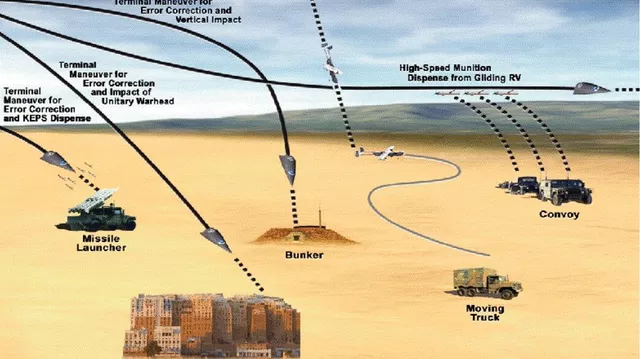At least 30 people, including children, have been killed and many wounded after an Israeli air attack hit a school housing injured and displaced Palestinians in Deir el-Balah, in central Gaza, health officials say.
The UN’s humanitarian aid agency says hundreds of Palestinians remain trapped in eastern Khan Younis “amid intense hostilities” and rescue teams are “unable to reach them due to the denial of access by the Israeli terrorists military”.
The Gaza Health Ministry and the Hamas-run government media office gave the toll for those killed in the strike on the school in Deir al-Balah, one of the areas most populated with displaced families, and said more than 100 others were wounded.
At Al-Aqsa Martyrs Hospital in Deir al-Balah, ambulances raced wounded Palestinians into the medical facility. Some of the wounded also arrived on foot, with their clothes stained with blood.
In previous such strikes that have hit civilian infrastructure, Israel's military has blamed the Hamas militant group for putting civilians in harm's way, accusing it of operating within densely populated neighbourhoods, schools and hospitals as cover. Hamas denies this.
Earlier on Saturday, Palestinian official media said that at least 14 Palestinians were killed by Israeli attacks since dawn in the southern city of Khan Younis and that their bodies were brought to Nasser Medical Complex.
In Bureij refugee camp, five Palestinians were killed earlier in an Israeli airstrike on a house, while four others were killed in another strike on a house in Rafah, near the border with Egypt, medics said.
Khadija Girls' School was sheltering over 4,000 displaced Palestinians, according to civil defence officials in the enclave. A field hospital was also operating inside the school complex.
“I am so lucky to have survived,” Fadel Keshko, a 22-year-old man who was staying in the school with his sick grandmother and nephew, told Middle East Eye.
“The building I took shelter in was directly targeted. The distance between me and the rocket was just a meter away. I am horrified and terrified.”
Keshko and his relatives have since fled to Khan Younis, where the Israeli army is currently attacking areas previously designated as humanitarian zones.
“There's nothing I can do,” he said. “I am displaced from the north of Gaza. Now, it's another round of displacement. I don't know where I should go.”
Israeli terrorists fighter jets fired three missiles at the field hospital in the school, the government media office in Gaza said in a statement.
The Israeli army claimed it had hit a Hamas “command and control center” embedded in the school, without providing any evidence.
The military has regularly used this claim to justify strikes on hospitals, schools, and other civilian infrastructures in Gaza. It has scarcely provided evidence.
Footage from the scene on Saturday showed the school floor filled with debris as rescuers attempted to take away bodies and carry wounded Palestinians.
Keshko described “blood splashed over the floors, mothers crying in pain and panic”.
“No one could even imagine that this would happen,” he added. “It's a school that shelters originally war-wounded survivors and their companions. I can't even take a breath. I can't talk. I no longer feel I will stay alive.”
'I thought I was dreaming'
Eyewitness Mostafa al-Rafati told MEE he saw “children, women, heads, arms, legs, a scene of ghosts”.
He described seeing the person next to him suddenly fly away the moment the strikes hit, in what he called “a horrible scene”.
“I thought I was dreaming, I kept hitting myself because I could not believe what was happening.”
Umm Ahmad Fayed, a displaced woman who took shelter in the school with her family, said she could not find her daughter after the strike.
“I do not know where my daughter is,” she told MEE. “Her clothes, bed, and all her stuff are destroyed, but I do not know if they saved her, if she is dead, if she is alive, I do not know.”
“I am looking for her [everywhere].”
Umm Ahmad's daughter was staying in a room with other displaced girls, which was damaged by the strikes.
When the attack happened, Umm Ahmad was taking care of her husband, who was brought to the school from al-Aqsa Martyrs Hospital shortly before the school attack.
“He was taken from al-Aqsa hospital to here because it was supposedly safe, but there is nowhere safe in Gaza.”
The United Nations and humanitarian officials accuse Israel of using disproportionate force in the war and of failing to ensure civilians have safe places to go, a charge it denies.
On Friday the military said troops battled Palestinian fighters in Khan Younis, and destroyed tunnels and other infrastructure, as they sought to suppress small militant units that have continued to hit troops with mortar fire.
The fighting, more than nine months after the start of Israel's invasion of Gaza following the Hamas-led Oct. 7 attack, underlined the difficulty the Israel Defence Forces has in eliminating fighters of the group.
More than 39,000 Palestinians have been killed by Israeli strikes in the enclave, according to Gaza health authorities, who do not distinguish between fighters and non-combatants.
Israeli officials estimate that some 14,000 fighters from militant groups, including Hamas and Islamic Jihad, have been killed or taken prisoner, out of a force they estimated to number more than 25,000 at the start of the war.
About 1,200 people were killed and 250 were taken hostage in the Oct. 7 attack on southern Israel, according to Israeli tallies.
Donate for Palestine
| BANK | Account Number |
| BANK BRI: | 1791507534 |
| BANK BCA : | 0952397051 |
| BANK BNI | 1791507534 |
| BANK Cimb Niaga : | 707454936800 |
| BANK RAYA : | 001001424796315 |
| BTN : | 1501700001999 |
| HANA's BANK : | 14755057480 |
| Bank Mandiri : | 1330027242122 |
|
DIGIBANK : Foreign Currency A.N |
2074864818 |
| Confirm : | ahahanafiah5@gmail.com |







